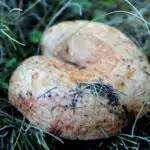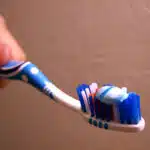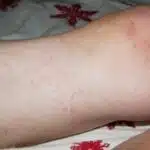As a laundry and stain removal expert, it’s not uncommon for me to receive inquiries about removing cranberry stains from clothes or carpet. Cranberry juice is a delicious drink that can leave behind stubborn stains on fabrics and carpets. These stains can be particularly challenging to remove if not addressed promptly and effectively.
Cranberry juice contains natural dyes that are notorious for leaving behind unsightly stains on clothing or carpets. The longer the juice sits on the fabric, the more difficult it becomes to remove the stain. However, with the right techniques and products, removing cranberry stains from clothes or carpet is possible. In this article, I will share some proven methods to help you tackle this common household problem with ease. So whether you accidentally spilled cranberry juice on your favorite shirt or your child dropped their cup of cranberry juice on the carpet, read on to learn how to remove these pesky stains effectively.
Understanding Cranberry Stains
Cranberry stains can be a frustrating and stubborn issue for anyone who enjoys this tart fruit. Whether it’s on clothing or carpet, cranberry stains are notorious for their ability to leave lasting marks that are difficult to remove. Understanding the nature of these stains is the first step in effectively treating them.
Common sources of cranberry stains include juices, sauces, and fresh or dried fruits. The pigments responsible for the bright red color of cranberries are called anthocyanins, which have been shown to bind easily with fabrics and carpets. This makes them particularly challenging to remove compared to other types of food stains like grease or ink.
As a laundry and stain removal expert, I’ve seen countless cases of cranberry-stained clothes and carpets. That’s why it’s important to act fast when dealing with this kind of stain. Delaying treatment can cause the pigment to set in deeper, making it harder to remove. In the next section, we’ll discuss the importance of treating cranberry stains quickly and share some tips on how to do so effectively.
The Importance Of Treating Stains Quickly
To ensure successful stain removal, it is essential to act quickly. The longer a stain sits on fabric or carpet, the more it sets in and becomes difficult to remove. This is especially true for cranberry stains, which are notorious for their deep red color and high acidity. Waiting too long to address a cranberry stain can result in a permanent blemish that may require professional cleaning.
One common mistake people make when dealing with stains is not pre-treating the affected area before washing or cleaning. Pre-treatment involves applying a specialized stain remover or detergent directly onto the stain and allowing it to sit for a certain amount of time before washing or cleaning. Skipping this step can reduce the effectiveness of subsequent cleaning methods and may even set the stain further into the fabric.
Another mistake is using hot water when attempting to remove stains from delicate fabrics such as silk or wool. Hot water can cause these fabrics to shrink or become damaged, making the stain removal process even more challenging. It is important always to check the care label on clothing before attempting any form of stain removal and follow manufacturer instructions carefully.
Transition: Now that we understand why quick action and proper pre-treatment are crucial when removing stains, let’s move on to preparing your stain removal area.
Preparing Your Stain Removal Area
- To successfully remove a cranberry stain from clothes or carpet, the correct supplies must be gathered beforehand.
- It is important to test the fabric of the material with a small amount of the cleaning solution prior to full application.
- To ensure the safety of other materials or surfaces, protective gear such as gloves and eyewear should be worn and the affected area should be covered.
- To prevent any further damage, a gentle cleaning solution should be chosen and applied carefully.
- Once the stain is removed, the area should be rinsed thoroughly with cold water and blotted dry with a clean, absorbent cloth.
- Any remaining residue should be treated with a spotting agent and the area should be allowed to dry completely before the clothing or carpet is used.
Gather Supplies
Choosing appropriate supplies and organizing your workspace are crucial steps in preparing your stain removal area. When dealing with cranberry stains, it is important to have the right tools on hand. Begin by selecting a laundry detergent that is designed to remove tough stains. Look for one that contains enzymes and oxygen bleach, which can help break down the cranberry pigment. Avoid using chlorine bleach, as this can actually set the stain.
Next, gather some white cloths or paper towels, a sponge or soft-bristled brush, and a bowl of cold water. It’s important to use cold water when treating cranberry stains because hot water can cause the stain to set further into the fibers of your clothing or carpet. You may also want to have a small bottle of rubbing alcohol on hand, as this can be an effective solution for removing any remaining red dye.
Once you have all of your supplies gathered, organize your workspace so that you have plenty of room to work and won’t accidentally spread the stain. Lay out a clean white towel or sheet on a flat surface and place the stained item on top. If you’re working with carpet, try to contain the affected area by placing towels or paper around the edges of the stain. With everything organized and ready to go, you’ll be able to tackle those stubborn cranberry stains with ease!
Test Fabric
In addition to choosing appropriate supplies and organizing your workspace, it is also important to test fabric before attempting to remove any stains. This step can help you determine the best approach for treating the stain without causing further damage to the material. To test fabric, simply apply a small amount of your chosen stain remover to an inconspicuous area, such as a seam or hemline. Wait a few minutes and then rinse with cold water. If there are no adverse effects, such as discoloration or texture changes, you can proceed with treating the stain.
When testing fabric, it’s important to keep in mind that some materials may have built-in stain resistance or special care requirements. For example, silk and wool fabrics may require gentle hand-washing or dry cleaning rather than traditional machine washing methods. Additionally, some fabrics may not react well to certain types of stain removers or cleaning agents. By testing fabric beforehand, you can avoid further damage and ensure that your chosen method is safe for use on your particular item.
Overall, taking the time to test fabric before removing stains is an important step in preparing your stain removal area. This simple process can help you avoid damaging your clothes or carpeting while ensuring that you get the best possible results from your cleaning efforts. With a little bit of preparation and know-how, you’ll be able to tackle tough cranberry stains and other stubborn blemishes with ease!
Protect Surrounding Areas
To fully prepare your stain removal area, it is important to also consider protecting the surrounding areas. When removing stains from clothing or carpeting, there is a risk of accidentally spreading the stain or damaging nearby fabrics. To avoid this, it is recommended to place a protective layer between the stained item and any adjacent materials. For example, when removing a stain from a shirt collar, you could place a towel or piece of fabric underneath to catch any drips and prevent the stain from spreading.
When dealing with furniture stains, it’s important to be even more cautious as these items may have delicate finishes or fabrics that can be easily damaged. To protect surrounding areas when removing stains from furniture, consider using plastic sheeting or drop cloths to cover nearby surfaces. This will not only prevent damage but also make cleanup easier by containing any spills or drips.
In addition to protecting surrounding areas physically, it’s also important to use caution when applying cleaning solutions. Be sure to read and follow all instructions carefully and avoid oversaturating fabrics or materials with too much cleaning solution. By taking these precautions and protecting surrounding areas, you can ensure that your stain removal efforts are effective without causing further damage or messiness in your home.
Blotting The Stain
An interesting statistic shows that according to the American Cleaning Institute, more than 60% of adults consider stains as their primary laundry challenge. Cranberry stains are one such stain that worries many individuals due to its deep red color and stubborn nature. However, with the right blotting technique, you can remove fresh cranberry stains from clothes and carpets.
When dealing with cranberry stains, it is essential to act quickly before the stain sets in. The first step is to blot the stain using a clean white cloth or paper towel. Avoid rubbing the stain as it can spread further and make the situation worse. Instead, use a gentle dabbing motion to absorb as much of the excess liquid as possible.
The success of removing fresh stains depends on how quickly you can react to them. Blotting is a vital step in this process as it helps take out most of the cranberry juice before it sets into your fabric or carpet fibers. If there is still some residue left after blotting, do not worry; we will discuss how to flush out the remaining stain using cold water in our subsequent section.
Using Cold Water To Flush The Stain
Cold water is an effective solution for removing cranberry stains from clothes and carpets. The low temperature of the water prevents the stain from setting in and spreading, making it easier to remove. Cold water benefits also include preserving the color and texture of the fabric or carpet since hot water can cause shrinkage, fading, or damage.
To use cold water for removing cranberry stains, start by flushing the affected area with cold running water immediately after the spill occurs. If the stain has dried or set in, soak the garment or carpet in a basin filled with cold water for 15-30 minutes before rinsing again with running water. Avoid using warm or hot water as this can make the stain worse.
Alternatives to cold water include using vinegar or lemon juice mixed with cold water to break down the acidity of cranberry juice. However, these solutions may not be suitable for all fabrics or carpets and may need further testing in inconspicuous areas before application.
Moving on to the next step, applying a stain removal product can help lift any remaining traces of cranberry stains from your clothes or carpet.
Applying A Stain Removal Product
Let’s face it, stains are a part of life. However, the good news is that there are plenty of techniques and products available to remove even the most stubborn stains. When it comes to removing cranberry stains from clothes or carpets, applying a stain removal product can be extremely effective.
When applying techniques for removing cranberry stains, it’s important to understand that not all stain removal products are created equal. It’s crucial to compare products before making a purchase. Some products may contain harsh chemicals that could damage your clothes or carpet fibers, while others may not be strong enough to remove the stain completely.
To ensure you choose the right product for your needs, read labels carefully and do some research online. Look for products specifically designed for cranberry stains or those that claim to work well on fruit juice stains in general. Additionally, consider reading reviews from other customers who have used these products successfully.
Now that you know about applying stain removal products, let’s move onto another effective technique: making a homemade stain remover.
Making A Homemade Stain Remover
After applying a stain removal product to the cranberry stain, it’s time to consider using natural stain removers. The benefits of natural stain removers are that they are often more gentle on fabrics and safer for the environment than chemical-based products. Additionally, many common household items can be used as effective natural stain removers.
One such item is baking soda. It is a versatile cleaning agent that can be used for a variety of household tasks, including removing stains from clothes and carpets. To use baking soda as a stain remover, simply mix it with water to create a paste and apply it directly to the stained area. Let it sit for several minutes before rinsing with cold water.
Another common household item that can be used as a natural stain remover is vinegar. Vinegar has acidic properties that make it effective at removing stains, including cranberry stains. To use vinegar as a stain remover, mix equal parts white vinegar and water and apply it directly to the stained area. Allow the solution to sit for several minutes before blotting with a clean cloth or sponge.
Transitioning into the subsequent section about using baking soda and vinegar: In addition to being effective natural stain removers on their own, baking soda and vinegar can also be combined for even greater cleaning power.
Using Baking Soda And Vinegar
When it comes to removing cranberry stains from clothing or carpet, using baking soda and vinegar is a popular method due to its effectiveness. Baking soda is a natural deodorizer and can help absorb the stain while vinegar’s acidic properties break down the pigment.
However, if you do not have either of these ingredients on hand, there are alternative methods that can still get the job done. For example, lemon juice can be used as a substitute for vinegar due to its high acidity levels. As for baking soda alternatives, cornstarch or talcum powder can be used in place of baking soda as they both have absorbent qualities.
It’s important to note that before trying any stain removal methods, it’s best to test a small, inconspicuous area first to ensure it won’t damage the fabric or carpet. Additionally, always blot the stain instead of rubbing it as this will only push the stain further into the fibers.
Trying Hydrogen Peroxide
After trying baking soda and vinegar, another option to remove cranberry stains from clothes or carpet is using hydrogen peroxide. Hydrogen peroxide is a powerful oxidizer that can break down the stain’s chemical structure and lift it from the fabric or fibers. Before using hydrogen peroxide, it is essential to test a small, inconspicuous area of the fabric or carpet for colorfastness.
Stain removal alternatives:
- Mix one part hydrogen peroxide with two parts water.
- Apply the solution directly onto the cranberry stain.
- Blot the stained area gently with a clean cloth until the stain lifts away.
Safety precautions:
- Wear gloves to protect your skin.
- Avoid inhaling the fumes while using hydrogen peroxide.
- Keep children and pets away from the treated area until it dries completely.
Using rubbing alcohol is another effective method to remove cranberry stains. Rubbing alcohol contains solvents that dissolve the stain molecules and make them easier to lift off. Apply rubbing alcohol directly onto the stain and blot gently with a white cloth until the stain disappears. However, like any other cleaning solution, it is essential to test a small, inconspicuous area of fabric or carpet first for colorfastness before applying rubbing alcohol on a larger scale. With these simple methods and safety precautions in mind, you can effectively remove cranberry stains from your clothes or carpet without damaging them.
Using Rubbing Alcohol
Ah, cranberry stains. The bane of every homemaker’s existence. Don’t you just love how they stubbornly cling to fabrics and carpets as if they were a permanent part of the material? Fear not, my friends! We have just the solution for you. Enter rubbing alcohol, the unsung hero of stain removal.
Rubbing alcohol is an excellent alternative to harsh chemicals that can damage your fabrics and carpets. It’s cheap, readily available, and has multiple uses beyond stain removal. Did you know that it’s also great for disinfecting surfaces and cleaning electronics? Who knew that this humble bottle could be so versatile!
To use rubbing alcohol for cranberry stain removal, simply saturate a clean cloth with the solution and dab it onto the affected area. Make sure to blot instead of rub as rubbing can cause the stain to spread further. Continue doing this until the stain fades away completely. And voila! Your fabric or carpet should be looking as good as new in no time. If you don’t have rubbing alcohol on hand, don’t worry – there are other alternatives out there such as vinegar or hydrogen peroxide which can work just as effectively.
Next up, we’ll be discussing another method for removing cranberry stains – using dish soap and ammonia. But before we get into that, make sure to try out this rubbing alcohol method first and see how it works for you. Who knows? You might just discover a newfound appreciation for this underrated household item.
Using Dish Soap And Ammonia
Dish soap and ammonia are common household items that can help remove cranberry stains from clothes and carpets. These cleaning agents work by breaking down the stain’s molecules, making it easier to lift off the fabric or carpet fibers. Before using these products, make sure to read their labels for any specific instructions or warnings.
To use dish soap and ammonia for removing cranberry stains, follow these steps:
- Mix a few drops of dish soap with warm water.
- Dip a clean cloth into the solution and blot the stain gently.
- Rinse the area with cold water.
- If the stain persists, mix equal parts of ammonia and water in a spray bottle.
- Spray the solution onto the stain and let it sit for 10-15 minutes.
- Blot the area with a clean cloth dipped in cold water.
Alternative methods for removing cranberry stains include using white vinegar, hydrogen peroxide, or baking soda. However, there are potential risks associated with these methods such as discoloration or damage to fabrics and carpets. It is important to test any cleaning solution on an inconspicuous area before applying it to the stained area.
When comparing effectiveness of cleaning methods, pros of using dish soap and ammonia include their availability and affordability while cons include their potential harshness on sensitive fabrics such as silk or wool. It is also important to note that some stains may require professional cleaning services.
In order to avoid damaging your clothes or carpet when trying to remove cranberry stains, it is best to avoid hot water and heat during the cleaning process. Hot water can set in stains while heat can cause shrinkage or melting of fibers on certain materials such as synthetic carpets or delicate fabrics like silk or wool. Instead, opt for cold water when rinsing out cleaning solutions and air dry fabrics if possible rather than running them through a dryer cycle.
Avoiding Hot Water And Heat
It’s important to avoid using hot water or heat when removing cranberry stains from clothes or carpet. Hot water can actually set the stain in place, making it even more difficult to remove. Instead, opt for cooler water and a gentle detergent to tackle the stain.
If you’re worried about damaging delicate fabrics while removing cranberry stains, there are several alternatives you can try. One option is using white vinegar mixed with cool water to blot the stain. Another alternative is using a baking soda paste on the affected area before washing with cool water and detergent.
When attempting to remove cranberry stains from clothes or carpet, it’s important to take extra care with delicate fabrics. Be sure to test any cleaning solution on an inconspicuous area first and never rub vigorously at the stain. With patience and attention, it’s possible to effectively remove these tough stains without causing damage.
To transition into the subsequent section about drying and inspecting the stain, consider ending with a sentence like: “Once you’ve tackled the stain using these tips for avoiding hot water and protecting delicate fabrics, it’s time to move on to drying and inspecting the affected area.”
Drying And Inspecting The Stain
- Air-drying the stain is a crucial step as it allows for the liquid to be absorbed and for the stain to be more easily treated.
- Upon inspection, it is important to identify the type of stain and the material it is on in order to choose the appropriate stain removal method.
- Spot-treating the stain is best done by using a small amount of detergent or specialty cleaner and gently rubbing the stain from the outside edge to the center.
- For cranberry stains on clothing, it is recommended to use a non-chlorine bleach to remove any residual discoloration.
- For cranberry stains on carpets, it is recommended to use a diluted solution of white vinegar and water to help lift the stain.
- After spot-treating the stain, it is important to air-dry the material and inspect the area to ensure that the stain has been removed.
Air-Drying The Stain
After treating the cranberry stain with a stain remover, it is important to dry and inspect the affected area. Air-drying can be an effective method for removing stubborn stains. Once the stain has been treated, blot it gently with a cloth or paper towel to remove any excess moisture.
To air-dry the stain, lay the garment flat on a clean towel and allow it to dry naturally. Avoid using heat or direct sunlight as this can set the stain and make it more difficult to remove. Using fabric softener in the rinse cycle can also help to prevent stiffening of the fabric during air-drying.
If air-drying is not possible or practical, there are alternative drying techniques that can be used. For example, using a fan or hair dryer on a cool setting can help to speed up drying time without causing damage to the fabric. It is important to avoid using high heat as this can cause shrinkage or damage to synthetic fabrics.
In conclusion, air-drying is an effective method for removing cranberry stains from clothes and carpets. By following these simple steps and using alternative drying techniques if necessary, you can ensure that your garments are restored to their original condition without causing damage to the fabric. Remember to always test any new cleaning products or methods on an inconspicuous area first before applying them to larger stains.
Inspecting The Stain
After treating the cranberry stain with a stain remover, it is essential to dry and inspect the affected area thoroughly. Identifying stains can be challenging, but examining the stain after treating it can help determine if further cleaning is necessary. Common cranberry stain locations include clothes, carpets, and tablecloths.
Inspecting the affected area once it has been treated can help ensure that no residue or discoloration remains. If there are any remnants of the stain, repeat the treatment process until it has been entirely removed. Carefully examine both sides of the fabric to ensure that all remnants of the stain have been eliminated.
Before drying the garment or carpet, make sure that there are no visible signs of staining or residue present. Once you have confirmed that the stain has been entirely removed, you can proceed with air-drying or using alternative drying techniques to dry the item without causing damage to the fabric. Remember always to check for any residual stains before storing or wearing an item.
Spot-Treating The Stain
After thoroughly inspecting the cranberry stain and treating it with a stain remover, it is time to spot-treat the affected area. Spot-treating involves applying a small amount of stain remover directly onto the stain and gently rubbing it in with a clean cloth or brush. This technique can effectively target stubborn stains that may have been missed during the initial treatment process.
When spot-treating cranberry stains, it is crucial to consider the type of fabric material. Different fabrics require different treatments, as some may be more delicate than others. For example, cotton and polyester fabrics are generally durable and can withstand more aggressive cleaning methods. However, silk and wool fabrics are more delicate and require gentle cleaning techniques to avoid damaging the fibers.
After spot-treating the cranberry stain, it is essential to re-inspect the area to ensure that all remnants of the stain have been removed. If any discoloration or residue remains, repeat the spot treatment process until it has been entirely eliminated. Once you have confirmed that no traces of stains remain, proceed with drying the item using appropriate techniques for your specific fabric material. By following these steps carefully, you can effectively remove cranberry stains from various fabric materials without causing damage to your clothing or carpets.
Repeating The Process If Necessary
Like a detective solving a case, drying and inspecting the cranberry stain is just the beginning. If the stain persists, do not give up just yet. Here are some tips for stubborn stains that will help you remove even the most persistent cranberry stains from your clothes and carpet.
Different types of cranberry stains require different treatments. For fresh cranberry juice stains, use white vinegar or lemon juice to blot out the stain before washing. For dried or set-in stains, use rubbing alcohol or hydrogen peroxide mixed with water to soak the affected area for at least 30 minutes before washing as usual. If you’re dealing with a tough carpet stain, try using a mixture of baking soda and water to create a paste that can be applied to the stain before scrubbing with a brush and vacuuming up.
It’s important to note that some fabrics may be more delicate than others and require special care when removing stains. Always check clothing labels for specific washing instructions before attempting any treatment. In addition, it’s always best to test any stain remover on an inconspicuous area first to ensure it won’t cause damage or discoloration.
Prevention tips for future stains include avoiding wearing light-colored clothing when eating cranberries or drinking cranberry juice, using napkins or bibs to protect clothing during meals, and cleaning up any spills immediately with cold water and dish soap. With these tips in mind, you’ll be able to enjoy your favorite cranberry treats without worrying about pesky stains ruining your clothes or carpet.
Prevention Tips For Future Stains
Preventing stains is always the best course of action, and there are several things you can do to avoid getting cranberry stains on your clothes or carpets. The first step is to be careful when handling cranberries, as they tend to stain quickly and easily. Always wear gloves when working with cranberries, and try not to spill any juice or pulp on your clothing or carpet.
Another way to prevent cranberry stains is to use a protective barrier between the berries and your clothing or carpet. For example, you can place a layer of plastic wrap over your kitchen counter before starting to work with the berries. This will catch any spills or splatters and prevent them from staining your clothes or carpet.
Finally, it’s important to dispel some common myths about preventing cranberry stains. Contrary to popular belief, rubbing alcohol does not remove cranberry stains – in fact, it can make the stain worse by spreading it around. Additionally, white vinegar is not an effective solution for removing cranberry stains from fabrics – it may help remove some of the color but won’t completely eliminate the stain.
Four Tips for Preventing Cranberry Stains:
- Wear gloves when handling cranberries.
- Use a protective barrier such as plastic wrap.
- Act quickly if a spill occurs.
- Avoid using rubbing alcohol or white vinegar on cranberry stains.
By following these prevention tips and taking quick action if a spill occurs, you can reduce your chances of getting unsightly cranberry stains on your clothes or carpet. Remember that prevention is always better than trying to remove stubborn stains later on!
Conclusion
Cranberry stains are a common problem for many individuals, and it is essential to understand how to remove them effectively. By following the steps outlined in this article, you can quickly and efficiently tackle any cranberry stain on your clothes or carpet.
It is crucial to treat stains as soon as possible to avoid them setting into the fabric. Begin by preparing your stain removal area and blotting the stain with cold water. Avoid using hot water or heat during the process, as this can cause the stain to set further into the material. Once you have dried and inspected the area, repeat the process if necessary.
As a laundry and stain removal expert, I highly recommend taking preventative measures to avoid future stains. Consider using a protective spray on your carpets or investing in stain-resistant clothing. Like a skilled surgeon delicately removing a tumor, removing cranberry stains requires precision and care. By following these steps and taking preventative measures, you can ensure that your clothes and carpet remain spotless for years to come.
Image Credits





























